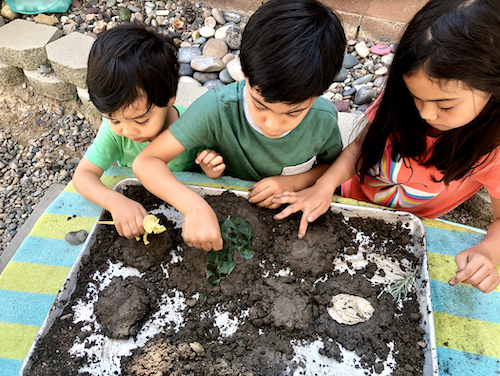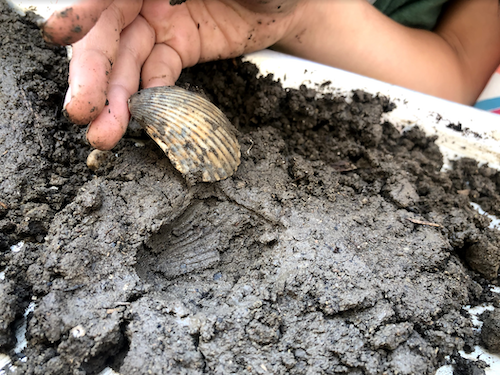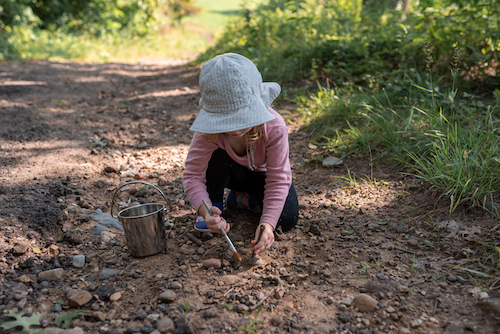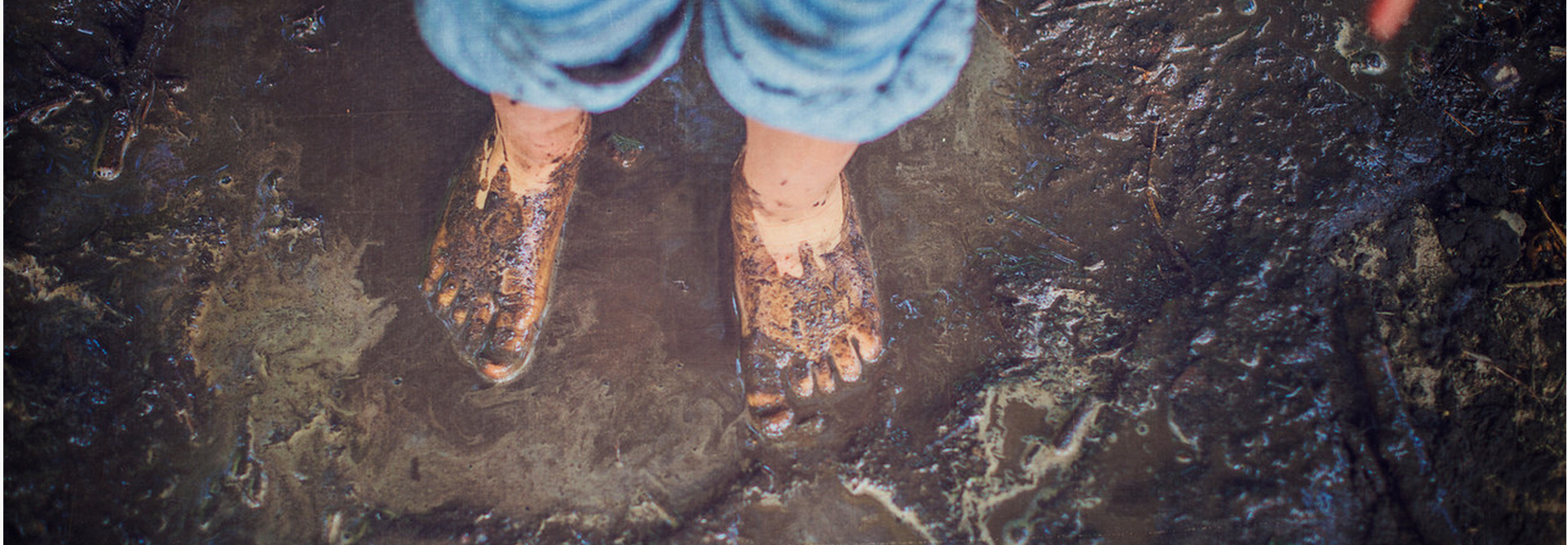Nature Fossils
-
Age: 0 to 8+
-
Time: 1 hour+
-
Materials: forest putty (homemade play-dough) or mud, objects from nature, paintbrush snd/or stick, sand and cornstarch (optional)
- Skills: Naturalist, Sensory, Science
To help kids learn how fossils tell us stories of earth’s past, try these fun ways to help kids play like archeologists as they dig up and even create their own fossils.
The Guide
Step 1: Learn about dinosaur fossils.
Learn about different types of dinosaurs from National Geographic Kids. Or, watch this video about how fossils are formed and how they tell us about the history of our planet.
Step 2: Create your own fossils!
- Make mud or forest putty: Try out a simple recipe for forest putty (Tinkergarten's name for playdough that we let kids take outside to blend and create with). Or, invite kids to mix water and dirt until you have mud the same consistency as brownie batter. Divide your putty or mud into balls and press flat against the ground, plate or other flat surface with the palm of your hand.
- Collect treasures: Invite kids to search their outdoor space for nature treasures of different shapes, sizes and textures.
- Create your fossils: Model how to press one of the nature treasures into the mud or forest putty patty. Gently lift it up and notice together the print that is left behind. Invite kids to make more prints with the nature objects they collected.
- Guess that fossil: Take turns making a fossil with a nature object and then invite the other person to guess what object it was just by looking at the print left behind.
Step 3: Excavation Play!
Bury rocks and other nature treasures beneath dirt or sand and offer kids a stick and a paintbrush to carefully excavate their "fossils".
To make a special substrate from which kids can excavate treasures, follow these easy steps:
To make a special substrate from which kids can excavate treasures, follow these easy steps:
- Mix 2 parts sand to 1 part cornstarch.
- Add in small amounts of water until the mixture sticks together.
- Bury rocks and other treasures into the wet mixture.
- Let air dry until the mixture has hardened.
- Enjoy excavating your treasures! You can re-use the substrate by adding more water.
Why is this activity great for kids?
When kids create their own impressions of nature objects on mud or forest putty, they get a hands-on lesson in how scientists use fossils to learn about the earth’s past. Excavating buried treasures stimulates multiple senses and kids' focus skills. Adding imaginative play to science exploration is also a super way to spark creativity while getting kids hooked on STEM!




